Pam Calvert's Blog, page 3
August 20, 2013
Picture Book Author Interview: Chieu Urban
I'm on vacation this week, so Picture Book University will resume next week. And to get you in the mood for the topic, I am excited to be able to share with you an interview by board book illustrator and author,
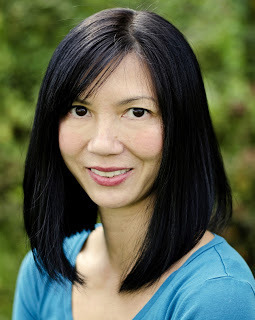 Chieu Urban! She is also offering some wonderful surprises at the end of the interview, so don't miss it!!!
Chieu Urban! She is also offering some wonderful surprises at the end of the interview, so don't miss it!!!
Next week, I'll be doing the topic of board books and books for young children ages 3 and under. Editors have been calling for these books, so if you're not familiar with them, you might learn something new!
Hi, Chieu!
I'm so glad to be able to interview you! Board books are something I'd like to highlight, so it was providence! Here are my questions: What made you decide to become a picture book writer? How did you discover board books as a genre? My true niche is in novelty books, which are highly visual, and include interactive elements. I have a background in graphic design, and love creating playful books that offers fun exploration for our youngest readers. What are your favorite picture books you've written? (Even if they aren't published yet!) Definitely Away We Go! A Shape and Seek Book, which was released this June. It’s a search-and-find concept book, and introduces shapes and transportation modes. I’m really pleased with how the illustrations and die-cuts work together to make a fun shape-and-seek game for kids. What are your favorite picture books that have inspired you? What makes them special? I love many of Eric Carle’s book. I find his illustrations very captivating. They are simple, clean, and bold, and The Hungry Caterpillar has been a favorite with all my girls. Salina Yoon’s books are clever and fun. Have you seen Pinwheel? It’s beautiful. How long did it take for you to get published in picture books?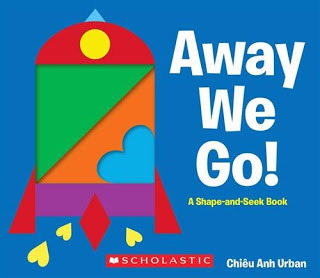
It took about six years for my debut novelty book, Raindrops: A Shower of Colors, to be published. During that time, I sketched out many ideas, attended SCBWI conferences, and learned as much as I could about the publishing world. You write for ages 2-5. What makes board books different from other picture books, and what advice can you give in writing one? Can you give good examples to analyze? Board books are a child’s first book. They can play with it, and chew on it. These books are sturdier, and have less spreads with fewer words than picture books. A board book has a higher chance of getting published if it is created by an author/illustrator. I’ve read that if you are an author with a board book idea, it’s best to submit it as a picture book. Many successful picture books are later printed in board book editions. If you have a great novelty idea, create a comprehensive dummy showing how the elements work, and research publishers that specifically publish novelty. Are there any tips or tricks you've used in your work that made your writing stand out? I think having my graphic design skills has helped my artwork stand out. It especially plays a large part in the design and layout of the novelty elements, and how they are incorporated into the story to provide a more interactive and fun book. Do you have an agent? Why or why not? Yes, I am represent by Ronnie Ann Herman at the Herman Agency. I enjoy creating books, but not so much with working on the business end of publishing.
What are you working on now? I just wrapped up a new concept dummy about shapes and the alphabet, and am very excited about this one. I’m pleased with how the illustrations came together, and the silly, sing-song story line. This dummy is fun and incorporates die-cuts throughout. 9. What's your newest title about? Away We Go! A Shape and Seek Book (Scholastic Cartwheel) introduces basic shapes and transportation modes, that are brightly illustrated with bold, colorful geometric shapes. Die-cuts of shapes are layered throughout each page, for a fun shape-and seek-game. The challenge is to find the vehicles in the shapes and the shapes in the vehicles.
If you want to learn more about Chieu, visit her website! She has amazing printables that go along with her books, too!
NOW for the surprise! She is offering TWO of her books for a drawing for two lucky winners! Sign your name here on this post and I'll enter you for a drawing. Announce her book on facebook, twitter, and your blog, you'll receive three entries! Let me know below!
As always, if you like this post, click the twitter, fb, and share!
Happy writing!
 Chieu Urban! She is also offering some wonderful surprises at the end of the interview, so don't miss it!!!
Chieu Urban! She is also offering some wonderful surprises at the end of the interview, so don't miss it!!!Next week, I'll be doing the topic of board books and books for young children ages 3 and under. Editors have been calling for these books, so if you're not familiar with them, you might learn something new!
Hi, Chieu!
I'm so glad to be able to interview you! Board books are something I'd like to highlight, so it was providence! Here are my questions: What made you decide to become a picture book writer? How did you discover board books as a genre? My true niche is in novelty books, which are highly visual, and include interactive elements. I have a background in graphic design, and love creating playful books that offers fun exploration for our youngest readers. What are your favorite picture books you've written? (Even if they aren't published yet!) Definitely Away We Go! A Shape and Seek Book, which was released this June. It’s a search-and-find concept book, and introduces shapes and transportation modes. I’m really pleased with how the illustrations and die-cuts work together to make a fun shape-and-seek game for kids. What are your favorite picture books that have inspired you? What makes them special? I love many of Eric Carle’s book. I find his illustrations very captivating. They are simple, clean, and bold, and The Hungry Caterpillar has been a favorite with all my girls. Salina Yoon’s books are clever and fun. Have you seen Pinwheel? It’s beautiful. How long did it take for you to get published in picture books?

It took about six years for my debut novelty book, Raindrops: A Shower of Colors, to be published. During that time, I sketched out many ideas, attended SCBWI conferences, and learned as much as I could about the publishing world. You write for ages 2-5. What makes board books different from other picture books, and what advice can you give in writing one? Can you give good examples to analyze? Board books are a child’s first book. They can play with it, and chew on it. These books are sturdier, and have less spreads with fewer words than picture books. A board book has a higher chance of getting published if it is created by an author/illustrator. I’ve read that if you are an author with a board book idea, it’s best to submit it as a picture book. Many successful picture books are later printed in board book editions. If you have a great novelty idea, create a comprehensive dummy showing how the elements work, and research publishers that specifically publish novelty. Are there any tips or tricks you've used in your work that made your writing stand out? I think having my graphic design skills has helped my artwork stand out. It especially plays a large part in the design and layout of the novelty elements, and how they are incorporated into the story to provide a more interactive and fun book. Do you have an agent? Why or why not? Yes, I am represent by Ronnie Ann Herman at the Herman Agency. I enjoy creating books, but not so much with working on the business end of publishing.
What are you working on now? I just wrapped up a new concept dummy about shapes and the alphabet, and am very excited about this one. I’m pleased with how the illustrations came together, and the silly, sing-song story line. This dummy is fun and incorporates die-cuts throughout. 9. What's your newest title about? Away We Go! A Shape and Seek Book (Scholastic Cartwheel) introduces basic shapes and transportation modes, that are brightly illustrated with bold, colorful geometric shapes. Die-cuts of shapes are layered throughout each page, for a fun shape-and seek-game. The challenge is to find the vehicles in the shapes and the shapes in the vehicles.
If you want to learn more about Chieu, visit her website! She has amazing printables that go along with her books, too!
NOW for the surprise! She is offering TWO of her books for a drawing for two lucky winners! Sign your name here on this post and I'll enter you for a drawing. Announce her book on facebook, twitter, and your blog, you'll receive three entries! Let me know below!
As always, if you like this post, click the twitter, fb, and share!
Happy writing!
Published on August 20, 2013 06:21
August 13, 2013
Picture Book University: Thinking in Pictures
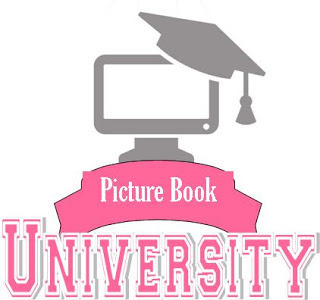
Welcome to the sixth lesson! Today, I'm going to focus on something very specific to picture books. If you get a handle on this, you'll see writing picture books in a whole new way! Many times I hear new writers often ask what is the difference between writing a picture book and a short story. I've seen this in the submissions for critiques as well. Instead of submitting a real picture book, they've written a short story because it's text/dialog heavy and the story develops in one place or two.
A picture book must be very visual. Even though you're not an illustrator, you still must visualize your story throughout its conception. There must be AT LEAST 16 different scene changes throughout your story. And when I mean scene changes, I mean the story isn't in one room and the main character is doing something different--I mean the scenery around your character must change! Have you ever picked up a book and the scenery is the same on every page? Have you ever read a book like that to a child? They become bored and antsy. The words are not enough to keep them attracted. That's the whole concept of a picture book--the child needs to be stimulated as they are listening to the words.
When I approach writing a new picture book, I always start with pictures to facilitate ideas. If my story isn't visual, then I abandon it. I use a storyboard pad in order to draw pictures. Here's a link to a page you can just print out on your own: Storyboard Pad or you can buy some here: Levenger storyboard pads
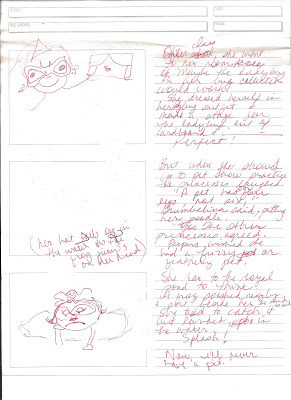 Here's a picture of how I started PRINCESS PEEPERS PICKS A PET. Notice how absolutely AWFUL I am as an illustrator. But it doesn't matter. What matters is that I'm thinking of scenes visually.
Here's a picture of how I started PRINCESS PEEPERS PICKS A PET. Notice how absolutely AWFUL I am as an illustrator. But it doesn't matter. What matters is that I'm thinking of scenes visually.In every single picture book that I write, I always use this pad. I didn't always have this tool--in fact, my first two books were written without the pad and it was very hard coming up with some of the funny scenarios because I only had my mind and my words. The storyboard pad opened up a whole new world to me! And as a math writer, I really needed that since I work out story math problems with my characters.
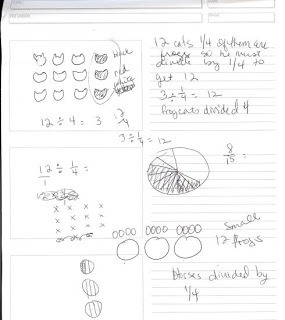
Here's a picture from MULTIPLYING MENACE DIVIDES where I work out the way the division math would work. I had to think in fractions. Here’s one page example when I had to show how the division magic worked with dividing twelve kittens. I brainstormed some ways I could show this on the storyboard paper:
Next is how it ended up looking like in the book:

I could never have figured out the math without my storyboard pad that encouraged pictures.
Now, I never brainstorm a story without this pad. Here's one of my newest manuscripts. It's very visual and the whole story depends on how visually appealing it is--in words.
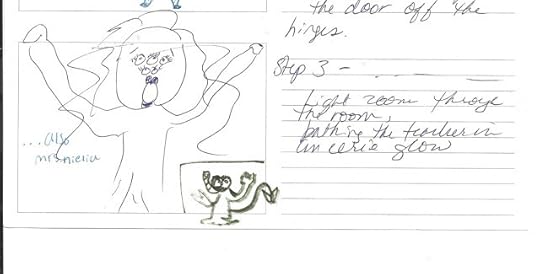
My daughter found my pad and started drawing her own version of the character, too!
Assignment 6:
Check out at least five picture books that are in the same genre as your current work-in-progress. How did the author think in pictures throughout? Did they do a good job on making the pictures interesting? (And even though you're not the illustrator, your story will create the pictures surrounding it. It's pretty amazing to see this happen when you get the illustrations back from the publisher.)
Now look at your manuscript. Are there at least 16 or more different scenes? If not, how can you create new places for your story to go? Can you focus on your story's character? Make them do something zany? Something visually funny or charming or interesting?
If you like this post, please post it on twitter or like on Facebook.
New to PBU? Don't miss a lesson. Go here for the archives: PBU
Have a great writing day!
Published on August 13, 2013 12:39
August 8, 2013
Picture Book University: Style Elements

Well, I'm back! Sorry I'm a bit late--we had a household emergency yesterday. That's what happens when you leave for more than a week. :-)
Today, I'm going to be talking about something that can elevate a ho hum manuscript into a publishable piece: Style elements. Now, I won't be going over things you should already know such as using the five senses or metaphors and similes or even voice or POV. Those things should be second nature to you and if they aren't, I'd advise you to take a children's literature course. I talk about different courses on my website here: children's writing.
These style elements are specific to picture books (fiction and nonfiction alike) and it's what sets picture books apart from other types of writing. If you pay attention to placing some of these in your manuscript, you will transform it (and maybe even your creative thinking!) These are not all the elements you could use, but they are the most important to pay attention to, in my opinion.
1. Rhythm--This is usually overlooked in newbie manuscripts. Often, people will write without regard to this
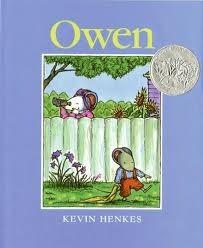 because, hey! They're not writing a rhyming story. If you look closely at the best books, they will often have a rhythmic line or two within the text. Often, they'll have a bunch. What is rhythm? It's a metered pattern of words. They sound poetic and have a beat. For example, in Kevin Henkes' book, OWEN, he uses a lot of rhythm throughout. After Owen proclaims his blankie, Fuzzy, goes where he goes, Henkes writes where it goes: Upstairs, downstairs, in-between/Inside, outside, up-side-down. Notice it doesn't rhyme, but has a nice beat. On the next page, Henkes describes how the blankie likes what the child likes: Orange juice, grape juice, chocolate milk/Ice cream, peanut butter, applesauce cake. See the rhythm? It's important for your manuscript to have this even if you don't rhyme. I always try to place some rhythm in my manuscripts--fiction or nonfiction.
because, hey! They're not writing a rhyming story. If you look closely at the best books, they will often have a rhythmic line or two within the text. Often, they'll have a bunch. What is rhythm? It's a metered pattern of words. They sound poetic and have a beat. For example, in Kevin Henkes' book, OWEN, he uses a lot of rhythm throughout. After Owen proclaims his blankie, Fuzzy, goes where he goes, Henkes writes where it goes: Upstairs, downstairs, in-between/Inside, outside, up-side-down. Notice it doesn't rhyme, but has a nice beat. On the next page, Henkes describes how the blankie likes what the child likes: Orange juice, grape juice, chocolate milk/Ice cream, peanut butter, applesauce cake. See the rhythm? It's important for your manuscript to have this even if you don't rhyme. I always try to place some rhythm in my manuscripts--fiction or nonfiction.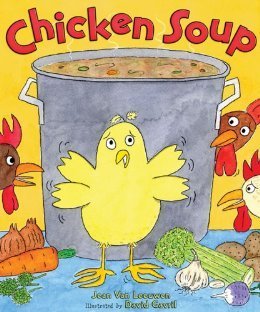 2. Repetition--This can come in the form of repeated lines, words, or even sentences. It gives a rhythm to your story that's important, but also is fun for a child to say over and over. Children love repetition and that's why after you read a story for the twentieth time, they want it read AGAIN! In CHICKEN SOUP by Jean Van Leeuwen, the story begins with repetition: Pssst! Cow told Sheep. Pssst! Sheep told Pig. Pssst! Pig told Goose. Goose told all the chickens! Pssst! The rest of the book doesn't use this, but it's a great way to open a story. She also uses repetition with onomatopoeia. CLOMP! CLOMP! CLOMP! is used throughout as a repeating line that helps give dramatic tension as the farm animals are all worried the farmer is about to make chicken soup and the chickens are in danger. This repeating line is the sound of the farmer's boots. Children will love to yell this line as a parent or teacher is reading to them. See if you can use this in your manuscript--one repeating phrase or line throughout. We can all remember the line from CLICK CLACK MOO! by Doreen Cronin. It's what made that book famous.
2. Repetition--This can come in the form of repeated lines, words, or even sentences. It gives a rhythm to your story that's important, but also is fun for a child to say over and over. Children love repetition and that's why after you read a story for the twentieth time, they want it read AGAIN! In CHICKEN SOUP by Jean Van Leeuwen, the story begins with repetition: Pssst! Cow told Sheep. Pssst! Sheep told Pig. Pssst! Pig told Goose. Goose told all the chickens! Pssst! The rest of the book doesn't use this, but it's a great way to open a story. She also uses repetition with onomatopoeia. CLOMP! CLOMP! CLOMP! is used throughout as a repeating line that helps give dramatic tension as the farm animals are all worried the farmer is about to make chicken soup and the chickens are in danger. This repeating line is the sound of the farmer's boots. Children will love to yell this line as a parent or teacher is reading to them. See if you can use this in your manuscript--one repeating phrase or line throughout. We can all remember the line from CLICK CLACK MOO! by Doreen Cronin. It's what made that book famous. 3. Puns--this is when you use a word that has a double meaning that's meant to be funny. Editors love puns. Not all manuscripts have them, but if your manuscript has the right tone, a pun can really make your story sparkle and add even more humor. In Dian Curtis Regan's book, BARNYARD SLAM, the use of pun is over-the-top and actually at the center of her story. Every page has some form of pun on it from the ducks being a bunch of quacks all the way to the goose dancing Swan Lake. Many of these puns are only ones adults could understand, but that's okay. Adults are the ones who are buying and reading these stories, so if you have a few puns for the older folks, editors will still like it (but not too much! Always think like a child when writing stories.) I'll never forget a workshop I attended that was taught by an editor from Chronicle. She showed how the manuscript went through 17 revisions and with each revision, they put more and more puns within it. That led to the many puns I put in my manuscripts including PRINCESS PEEPERS and MULTIPLYING MENACE DIVIDES.

4. Circularity--this is where the beginning and ending are either similar or the exactly the same. The story completes a full circle. This can either give closure to the manuscript or even surprise the reader because the
story seems to be starting all over again which will give little ones a reason to read it AGAIN! In Chris Gall's book, THERE'S NOTHING TO DO ON MARS, the book opens as the title suggests, a little boy who lives on Mars is bored--there's nothing to do. Throughout the journey (as this is a journey book), there's TONS to do and yes, he learns something until he ends up on Saturn and guess what? There's nothing to do on Saturn. The ending is full circle--although it's not exactly how it opens, it's very similar (and it could set up a sequel...one never knows!)
5. Onomatopoeia--now I wouldn't put this down if it weren't SOOOO important in picture books. You should have learned about this from 5th grade language class. But I'm going to put it out there that almost every picture book should have some form of this in their story or manuscript (nonfiction, too!!!) Why? Because kids LOVE to say these words and they give sound and vibrancy to a book. Also, it's FUN for the art director to place HUGE text of these sound words within a story. I'll never forget when I put in WHOOSH in PRINCESS PEEPERS PICKS A PET how that one word made such a difference in the page spread. Kids love this.
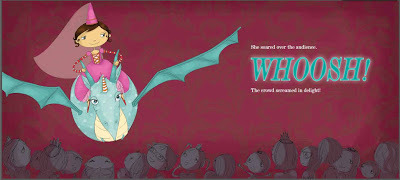
Assignment 5:
I'd love for you to get your hands on the book ANIMALS DON'T, SO I WON'T by David G. Derrick, Jr. He has almost every element I talked about today and the story is very cute--one you should study. He's a DreamWorks storyboard artist and knows what he's doing to delight children.
For this week:
Check out ten different books, either nonfiction or fiction or both and see if you can spot some of these elements. Are there other elements that the author used to set it apart? Beautiful language, rhyme, alliteration, etc.? Take a look at your work-in-progress. Is there a way you can infuse at least two of these elements within it? Can you try to use all five? See what happens! You might be amazed where these could take your manuscript!If you're new to PBU, check out the first four assignments here: PBU. They don't have to be done in order and there's no set time limit! That's the beauty of a free workshop. It's always here for you.
Please, please, please tell others about this resource if you like it or have learned something new. Just click the twitter birdie or hit the like button below. If you don't want to miss out on a post, just subscribe by email.
Happy writing!
Published on August 08, 2013 10:14
August 3, 2013
PBU Returns Next Week...
Just wanted to pop in to tell you that Picture Book University will be back next week. I'm on vacation in Colorado this week. I'll be posting on Wednesday, July 6.
See you then!
See you then!
Published on August 03, 2013 07:46
July 23, 2013
PBU Critique Giveaway Winner!
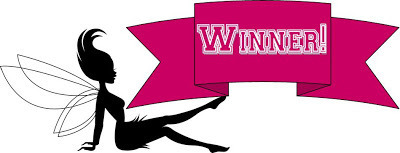 I'm excited to announce the winner of the PBU critique giveaway! Thank you to all who participated. The traffic to my blog has been phenomenal and I'm so glad my posts have been beneficial!
I'm excited to announce the winner of the PBU critique giveaway! Thank you to all who participated. The traffic to my blog has been phenomenal and I'm so glad my posts have been beneficial!So, let's all slap our knees for a drumroll....
The winner is...
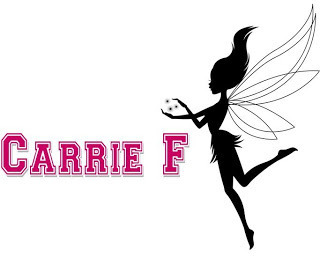
You may email me at pam@pamcalvert.com and I'll give you instructions on how to submit your manuscript. If you're not ready to receive the critique just yet, please let me know you saw this posting. If you don't respond in a week, I will do the drawing again.
Thank you, everyone! I'm on vacation next week, so I won't be posting, but I will be doing another picture book analysis this week.
Happy writing!
Published on July 23, 2013 07:59
July 22, 2013
Picture Book University: Nontraditional Storytelling

Welcome back! I hope you almost feel like a picture book expert by now. Through the last three weeks, you should have read no less 40 picture books. That's amazing, isn't it? If you've missed the previous lessons, just click here: PBU Lessons.
This week, I'll be highlighting different ways to tell your story. I'm going to be honest here--illustrators (who are also writers) can normally get away with these types of books as well as very established picture book authors. Since you are straying away from the "traditional" and what editors say they're looking for (which by and large is character driven, funny, quirky books with a surprising twist!), you must have a spectacular idea to turn their heads.. (This can happen, so I don't want to discourage you.)
If you've studied the market at all, you may have noticed some extremely successful books that are told in a surprising way. I'm going to list a few different "types" of books and their examples. This is definitely not exhaustive. I will try to give author only examples as much as I can. Usually, they will be author/illustrator.
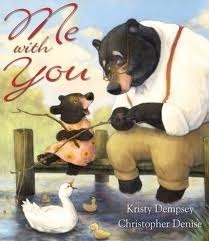 1. Cycle Stories: These stories follow the main character along throughout the day. Normally, they're told from when the child gets up and ends when he goes to sleep, but not always. It can also be told through seasons. Normally, it ends the way it began. Any story can have a cyclical element where the opener mimics the ending. This is a style element, though, not a cycle story. A few examples include Me With You by Kristy Dempsey, Pajama Pirates by Andrew Kramer, Snow! Snow! Snow! by Lee Harper, and Red, White, BOOM! by Lee Wardlaw.
1. Cycle Stories: These stories follow the main character along throughout the day. Normally, they're told from when the child gets up and ends when he goes to sleep, but not always. It can also be told through seasons. Normally, it ends the way it began. Any story can have a cyclical element where the opener mimics the ending. This is a style element, though, not a cycle story. A few examples include Me With You by Kristy Dempsey, Pajama Pirates by Andrew Kramer, Snow! Snow! Snow! by Lee Harper, and Red, White, BOOM! by Lee Wardlaw.2. Journey Stories: This is similar to a cycle story in that there isn't a beginning main problem. The story follows the main character through a series of events. There is a big beginning and there are things that happen throughout the story and there is even a climactic event with the story ending in the journey's end (which often times is a surprising twist), but the traditional story arc is not there. What is intriguing about a story like this is the journey itself. Beautiful language or rhyme can enhance this type of story as well. Tell Me Something Happy Before I Go to Sleep by Joyce Dunbar, Squeak, Rumble, WHOMP! WHOMP! WHOMP! by Wynston Marsalis, and Where is Catkin by Janet Lord.
3. Poetry: This is a story told in poetic form. It can either be describing a concept through a series of poems or telling a tale in rhyme. It can also be one large poem. Always there needs to be a good beginning with a climactic surge at the end and a twist or satisfying ending. Poetic language is key to selling this type of story. Examples include Once Upon a Twice by Denise Doyen, Atlantic by G. Brian Karas, Mirror Mirror: A Book of Reversible Verse by Marilyn Singer, and Pumpkin Butterfly by Heidi Mordhorst.
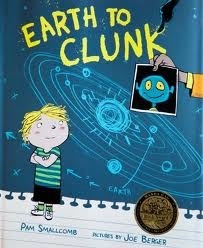 4. Cumulative stories: This is where a story is told building upon itself until it gets to a surprising twist ending or it can end in a cyclical way--back to the beginning. A Dog is a Dog by Stephen Shaskan, How Do Dinosaurs Say Goodnight series by Jane Yolen, If You Give a Mouse a Cookie series by Laura Numeroff.
4. Cumulative stories: This is where a story is told building upon itself until it gets to a surprising twist ending or it can end in a cyclical way--back to the beginning. A Dog is a Dog by Stephen Shaskan, How Do Dinosaurs Say Goodnight series by Jane Yolen, If You Give a Mouse a Cookie series by Laura Numeroff.5. Journal entries or diary format: Popular almost ten years ago, many authors have been successful writing these and kids love them. This is a story told through a series of diary entries or letters or journal notes. Examples include Diary of a Worm series by Doreen Cronin, Dear Mrs. LaRue series by Mark Teague, Diary of a Wombat by Jackie French, Memoirs of a Goldfish by Devin Scillina, and Help Me, MR. MUTT! by Janet Stevens and Susan Stevens Crummel. Another take on this that doesn't show only letters but is about correspondence between an alien and a human boy is the delightful Earth to Clunk by Pam Smallcomb.
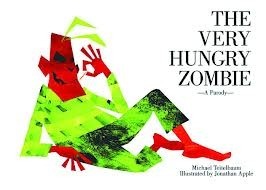
6. Funny spoofs of classics: This is where an author takes a well known book and puts his/her own twist or spin on it. Many new revisionists include Goodnight Goon, Runaway Mummy by Michael Rex,The Very Hungry Zombie by Michael Teitelbaum, A Creature Was Stirring: One Boy's Night Before Christmas by Carter Goodrich, and Frankenstein by Rick Walton that spoofs the Madeline series.
Assignment 4: Go to a bookstore and peruse the newest titles. Try to find at least one of each of these types of books. Are they written by an author/illustrator or an author only? Any by new authors? What types of trends in picture book storytelling do you see?
If you don't have access to a bookstore, go to your library and check out 2-3 of each type. Which type do you like the best? Is there a type you think you'd like to try? Go for it!
If you like these posts, please don't forget to tell your friends by hitting the twitter bird and liking it on Facebook. A blog mention is always welcome!
Don't forget, I'll be drawing names for my free picture book critique tomorrow. If you want to find out details, click this link: PBU Critique Give Away
Happy perusing!
Published on July 22, 2013 13:13
July 16, 2013
PBU Participant Button and a Critique Giveaway!
Okay, now that things have settled down a little, I was able to post your names on my blog as a participant in Picture Book University workshop. I've linked your blogs as best as I could. If you'd like me to change your name or link or remove you from my list, please let me know.
Now onto the good stuff. If you've liked the posts so far, please let others know that you're participating or share about what I'm doing.
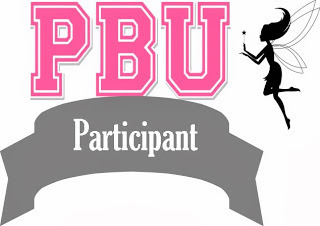
You can place this button on your website by first right clicking on the image and saving it then adding it and linking it to this part of my blog: Picture Book University. Your blog should resize the image for you, but if you have trouble, I can send you a smaller scale of the button above. I will be updating this page to include all the lessons so if people stumble upon it in the future, they won't miss a post.
If you decide to post this on your website or blog, please let me know, and I'll enter you for a chance to win your choice of a free critique or one of my books. Also, if you make a post talking about the workshop, I'll add two more entries for you.
I will also be doing picture book give aways for picture book authors I interview as well, so be on the lookout for those coming up in August.
Thank you, fellow pb writers!
Now onto the good stuff. If you've liked the posts so far, please let others know that you're participating or share about what I'm doing.

You can place this button on your website by first right clicking on the image and saving it then adding it and linking it to this part of my blog: Picture Book University. Your blog should resize the image for you, but if you have trouble, I can send you a smaller scale of the button above. I will be updating this page to include all the lessons so if people stumble upon it in the future, they won't miss a post.
If you decide to post this on your website or blog, please let me know, and I'll enter you for a chance to win your choice of a free critique or one of my books. Also, if you make a post talking about the workshop, I'll add two more entries for you.
I will also be doing picture book give aways for picture book authors I interview as well, so be on the lookout for those coming up in August.
Thank you, fellow pb writers!
Published on July 16, 2013 08:25
July 15, 2013
Picture Book University: Character Driven Picture Books

Hello, again! Hope your week was productive. I just spent five days with a bunch of tweens at a church camp and am a little tired, but I'm excited to dive into the next lesson! Each of those kids was so cute and this gave me the idea to highlight one of the best selling types of picture books--character driven. If you look at most agents who rep picture books, you'll find they often call for this type of book.
So, what is a character driven picture book exactly? I define it as a story that is more about who the character is than about the plot that drives the character. This makes that character memorable and live in the heart of a child. The reason why editors clamor for these types of books is because they not only sell but they can have marketing tie-in's if the book goes well plus, of course, there will be sequels which will make more money for the publishing house.
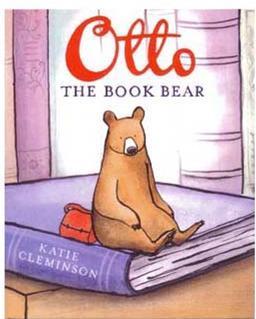 Some great recent examples of character driven picture books are Vampirina Ballerina by Anne Marie Pace, Otis by Loren Long, Fancy Nancy by Jane O'Connor, Big Mean Mike by Michelle Knudson, and Otto the Book Bear by Katie Clemenson. You can tell if the story is character driven by the title--it will be the main character's name. I wrote one--Princess Peepers! The sequels will often have the character's name plus the adventure, but the title book will most often be the character's name.
Some great recent examples of character driven picture books are Vampirina Ballerina by Anne Marie Pace, Otis by Loren Long, Fancy Nancy by Jane O'Connor, Big Mean Mike by Michelle Knudson, and Otto the Book Bear by Katie Clemenson. You can tell if the story is character driven by the title--it will be the main character's name. I wrote one--Princess Peepers! The sequels will often have the character's name plus the adventure, but the title book will most often be the character's name.How do you go about writing one? When I set out to write Princess Peepers, I didn't know I was writing a character driven book, even though I'd studied them. After I'd finished, I had entitled the book, The Princess Who Wore Glasses, emphasizing wearing glasses. Once the story went through revisions, I noticed my focus shifted off the glasses and onto Princess Peepers herself and then I re-titled it. Because of Peepers' personality, she really has the ability for many more sequels and stories. You know you have a character that is memorable when this happens.
What are the qualities you must have for a true character driven book?
Must haves:
Unique characteristics that go outside the boxHave an emotional connection with childrenThe "star" of the bookBig internal conflict that outweighs the external conflictStory focus is on the main character not on the plot (although most title character driven books have wonderful plots!)If you take that particular character away from the story, it falls apart or you wouldn't have a story.Character image is instantly recognizable (this is beyond a writer's control, but if you've written your character well, you won't have to worry about this.)
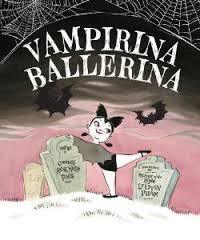
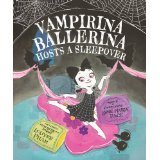 You know you've written a character driven book when a child can dress as your character and people will know who they are. I'm going to do an analysis of Vampirina Ballerina, showing you what makes this a perfect character in a title series. I'm all agog to tell you there is a sequel to this marvelous book coming out NEXT WEEK!!! It's entitled, Vampirina Ballerina Hosts a Sleepover.
You know you've written a character driven book when a child can dress as your character and people will know who they are. I'm going to do an analysis of Vampirina Ballerina, showing you what makes this a perfect character in a title series. I'm all agog to tell you there is a sequel to this marvelous book coming out NEXT WEEK!!! It's entitled, Vampirina Ballerina Hosts a Sleepover. Vampirina Ballerina by Anne Marie Pace
Genre: Humor, character driven
Synopsis: When Vampirina decides to become a ballerina, she isn't like the other students which gives her all kinds of trouble (like she can't see herself in a mirror!) But with determination, she reaches her dreams.
(I'm not going to highlight the plot or style--only character elements)
Unique--to my knowledge, there has never been a vampire ballerina. She's the first! Her spooky qualities makes her a very unique ballerina.Emotional connection--many little girls aspire to be a ballerina. All children want to be good at something.Star quality--Vampirina is not only the star of the book, but is the star of the stage. You can't get any more star than that.Big internal conflict--Vampirina must believe in herself in order to succeed.Story focus--the story follows Vampirina on her quest to become a ballerina. She's very different from the other students and so she fails a lot because she's being herself--a vampire. This creates humorous situations as well as touching ones. If you take Vampirina out of the story, you have no story. The qualities of Vampirina's personality is what makes this story work. Replacing her with let's say, Princess Peepers, would create a totally different story plot. Character image is recognizable. They're now selling Vampirina Halloween costumes. That's a marketable character!
Assignment 3:
Go to the library (by now, you should be on first name basis with the children's section librarian!) and check out 5 or more RECENT character driven picture books. They all must be the title book, meaning the first book in the character series. For example, check out Fancy Nancy not any of the titles after such as Fancy Nancy and the "Fill in the Blank". Take them home and read them. Using your picture book journal (I hope you have one by now), write down the characteristics of each character that makes it a great character driven MC.After you're done, can you list any more title characters that you either have in your own library or remember as a child? What makes them memorable? Was it the story or the qualities of that character? Can you see something in each one that is similar? Now look at your manuscripts. Do you have one character that might make a great character for a book of this type? Can you make a refocus shift to produce a better character driven book? Do you have any ideas for a character driven picture book?
If you know some stand out character driven picture books, please post them below. This might help your fellow picture book writers pick out some great examples!
As always, If you like this post, please hit the like button below or the twitter bird!
Happy reading and writing!
Published on July 15, 2013 11:07
July 8, 2013
Picture Book University: Storyboard

Welcome back! I hope you had a great Fourth of July celebration. I know I did and so...I'm a little behind on everything! But I didn't forget about you. :-)
So, today we'll be looking at something that's very important in the world of picture book writing--storyboard. You may have heard about this from an illustrator friend or maybe you watched a making of an animated movie and noticed the writers use storyboard. We are much like animators--we are bringing characters to life. And like those animators, we must sweep our readers into the story or unfortunately, they will snap the book shut and run off and play with a video game. It's true.
Writing any story is very visual. If you can't think in pictures, it will be very hard for you to even write a picture book. In order to help you think of your story visually, you will need to create a story board for your manuscript. So, what is storyboard?
A typical picture book contains 32-40 pages. As the e-book realm gets stronger, I believe this will change, but for now, we need to stick with this type of thinking until publishers stop asking for this type of book. The whole reason we need to think of our story in 32 published pages is because that's the standard amount of pages the publishers order from the printer. Either that or 40 pages. Anything different will cost them big bucks, so they won't do that. Easy readers and board books don't follow these rules, but they do have rules of their own. I'm not going to go over that here, but I will touch on board books in a future post.
I'm going to show you what should happen on each page of a typical picture book story. Not all books follow this structure and there are many ways to tell your story. We'll go over that in another post. But for now, I'm going to show you what should happen in your story and how it may unfold in your book. I've had to section out some of my picture book manuscripts for submission to foreign publishers. They make you know this, so it's prudent for you to be able to take any manuscript and section out the pages.
I'm going to use Princess Peepers Picks a Pet for an example. It has 32 pages.
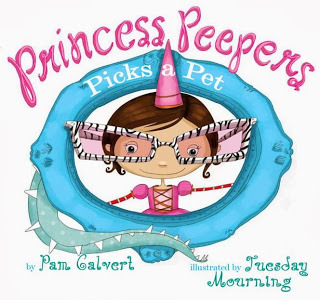
Page 1--endpaper--pretty pink!
Page 2-3--endpaper and title page
Page 4-5--CIP and dedication--the CIP is the Cataloging in Publication page where all the publishing information about the book is displayed. This actually is an author's tool--you should be checking every book's CIP whenever you pick it up. You can see when the book was published, where, and by whom. In my book, even my editor and book designers are listed.
 Page 6-7--Introduction of characters and setting. Story problem could be introduced here as well. I chose to only to introduce my character. I do this almost always for every book. In Princess Peepers Picks a Pet, three things happen to introduce you to her. Notice the story doesn't start until page six!
Page 6-7--Introduction of characters and setting. Story problem could be introduced here as well. I chose to only to introduce my character. I do this almost always for every book. In Princess Peepers Picks a Pet, three things happen to introduce you to her. Notice the story doesn't start until page six!8-9--Problem one starts or overarching problem. In this story, Princess Peepers doesn't have a pet for the pet show. And she's the only princess who doesn't own a pet. Big problem.
10-11--Main character tries to solve the first problem. Peepers finds a bumble bee, but the other princesses do not approve. Failure.
12-13--Second try to solve the problem. Peepers finds a frog. But the other princesses don't think a frog is an appropriate pet. Failure.
14-15--Third try to solve the main problem. Peepers goes into the woods to find a pet but her glasses fall off. Failure and another bigger problem is introduced. Peepers can't see without her glasses.
16-17--Introduction of second story problem. Here is the moment when Peepers finds her pet, but she can't see that she's in love with a large dragon! Most people would be afraid and so would Peepers but she thinks it's a flying unicorn. Notice the overarching problem seems to be solved, but it isn't because everyone knows the other princesses wouldn't approve of a scary dragon. (Although my illustrator drew an adorable dragon!)
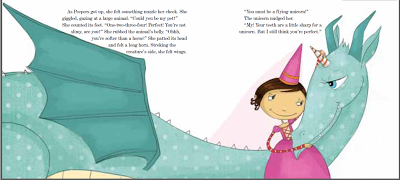
18-19--second and third attempts to solve second problem--Peepers is having trouble with her "unicorn". It doesn't act like a unicorn because it breathes fire and seems to have mudcaked fur (dragon scales).
20-21--third problem--Everyone is wondering where Peepers is. She's late!
22-23--First attempt at solving the third problem. Peepers flies into the theater so she won't be late.
24-25--Second attempt at solving the third problem. Peepers soars over the frightened crowd.
26-27--Third attempt at solving the third problem (and overarching problem). Peepers arrives on time and wonders if her pet will win and if the princesses will approve.
28-29--Climax--announcement of awards and Peeperes finds out her pet is a dragon. My climax comes up a bit early. Many times the climax will happen on pages 30-31. For this book, there is an emotional climax that happens.
30-31--Emotional Climax--Peepers falls in love with her dragon. Awww...
32--Ending. Peepers is roasting marshmallows in her dragon's fire breath. :-)
Notice the rule of three within the story structure. And by the time the story ends, all problems are solved by either within the story or one thing fixes the overarching story.
Assignment 2:
Go to the library or your home library and pick out three stories that you can see follow this type of story structure. Storyboard each one, paying close attention to how the author uses this structure. Also, many books don't use this structure at all because it won't work for it. I will go over other types of stories later. If the book you chose doesn't use this structure, find another or look and see how the different structure worked!
Now, take a look at your manuscript. Does it follow this structure? Is something missing? Can you write a story using this structure?
I hope this helps you see picture books in a whole new way.
If you like this post, as always, please hit the like button below or the twitter bird! I always welcome your comments, too.
Happy reading and writing!
Published on July 08, 2013 07:23
July 1, 2013
Picture Book University: Picture Book Genres
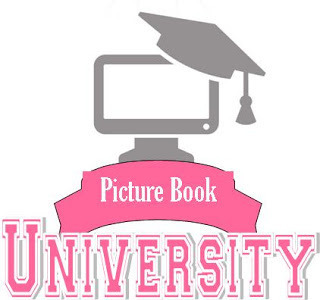
Welcome to Picture Book University. Each week, I will highlight some aspect of picture book writing and then give you an assignment for the week. At the end of these posts, you will have participated in a mini-picture book workshop that should help you see your picture book manuscripts in a whole new way--preferably, in a marketable way. ;-)
For my first lesson, we'll be looking at the different genres. A genre is a classification of shared traits of any piece of literature. In picture books, there are many genres and sub-genres. Since this is a "mini" workshop, I'm only going to focus on a few, but I will list the top ones.
Now, I've been using the term, picture book, loosely. Some people distinguish between picture books and picture story books. For our purposes here, we will focus only on picture books. A picture book has a picture on every page, but the text is limited--no more than 1000 words. A picture story book is filled with text and may not have a picture on every page. These will have more than 1000 words. There are some that blur the lines--like my math adventures. They have pictures on every page and yet, they can run up to 1800 words.
Picture Book Genres (or Classifications)
1. Concept2. Traditional Literature3. Magic Realism4. Anthropomorphic5. Board books6. Interactive7. Humor8. Realistic9. Poetry10. Nonfiction
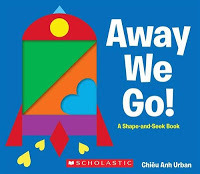 These are just a few genres. There are many more such as wordless books, nursery rhymes, lift the flap, etc. But really, unless you're an illustrator, it isn't likely a writer can sell one of those. You also could make a case that picture books follow the other literary fiction genres such as historical, science fiction, fantasy, mystery, etc. But I'm not going to highlight those here. Once I go over the characteristics of each, you'll find that many books use several genres or classifications. 1. Concept--these are books that highlight a concept. Usually, they teach a child something such as colors, shapes, alphabets (although an alphabet book can be a sub group all its own), or counting. For example, Chieu Urban's book, Away We Go, highlights several concepts: shapes and vehicles. If you want a winner, use more than one concept in a concept book!
These are just a few genres. There are many more such as wordless books, nursery rhymes, lift the flap, etc. But really, unless you're an illustrator, it isn't likely a writer can sell one of those. You also could make a case that picture books follow the other literary fiction genres such as historical, science fiction, fantasy, mystery, etc. But I'm not going to highlight those here. Once I go over the characteristics of each, you'll find that many books use several genres or classifications. 1. Concept--these are books that highlight a concept. Usually, they teach a child something such as colors, shapes, alphabets (although an alphabet book can be a sub group all its own), or counting. For example, Chieu Urban's book, Away We Go, highlights several concepts: shapes and vehicles. If you want a winner, use more than one concept in a concept book!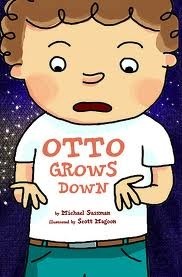 2. Traditional Literature--these books encompass traditionally told stories such as folktales, fairy tales, myths, legends, trickster tales, and religious tales. Author/illustrator Paul O. Zelinsky makes his living illustrating old folktales and fairy tales along with nursery rhymes. But that doesn't mean us writers can't sell these kinds of tales. My picture books are all classified under this genre heading--my math adventures are sequels to the original Rumpelstiltskin tale and Princess Peepers is written in traditional fairy tale fashion.
2. Traditional Literature--these books encompass traditionally told stories such as folktales, fairy tales, myths, legends, trickster tales, and religious tales. Author/illustrator Paul O. Zelinsky makes his living illustrating old folktales and fairy tales along with nursery rhymes. But that doesn't mean us writers can't sell these kinds of tales. My picture books are all classified under this genre heading--my math adventures are sequels to the original Rumpelstiltskin tale and Princess Peepers is written in traditional fairy tale fashion. 3. Magic Realism--this is where reality and fantasy hit head on. Anything is possible! A great example of this is Michael Sussman's Otto Grows Down, where one wish to make your baby sister go away can lead to a very weird situation.
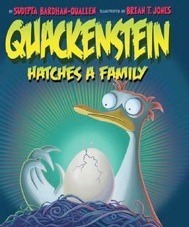 4. Anthropomorphic--this is where animals act literally like humans. They are the main characters and usually, but not always, their counterparts are different animals as well. I like to classify personification as a sub-genre with this group as well--where an inanimate object also acts like a human. Author, Sudipta Bardhan-Quallen has been successful with this genre by taking traditional tales and morphing them into funny animal likenesses such as Quackenstein, The Hog Prince, and Hampire. Personification is making some headway in the market. Years ago, editors wouldn't even look at a personified character, but with the success of Zero to Hero and Spoon, this genre is making a comeback.
4. Anthropomorphic--this is where animals act literally like humans. They are the main characters and usually, but not always, their counterparts are different animals as well. I like to classify personification as a sub-genre with this group as well--where an inanimate object also acts like a human. Author, Sudipta Bardhan-Quallen has been successful with this genre by taking traditional tales and morphing them into funny animal likenesses such as Quackenstein, The Hog Prince, and Hampire. Personification is making some headway in the market. Years ago, editors wouldn't even look at a personified character, but with the success of Zero to Hero and Spoon, this genre is making a comeback. 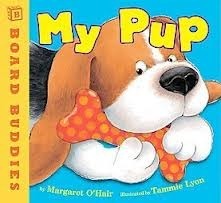 5. Board books--these are often concept books, but they don't have to be. They are for the very young child, hence the board where the pages are constructed of coated cardboard so little ones who love to chew won't destroy the book in a matter of seconds. They are small, perfect for little hands and have very limited words or are rhyming. A board transitional is a little larger book with coated cardstock for pages. These are for a slightly older child--probably ages 2 or 3. A great example of a board transitional is Sweet Baby Feet--I highlighted this book in a picture book analysis. Another board book that is different from this one but by the same author is My Pup. That started off as a regular picture book, but because it was written with concise rhyme, it was made into a perfect board book. This is a journey story, but that's a type of story and I'll go over this in the next lesson.
5. Board books--these are often concept books, but they don't have to be. They are for the very young child, hence the board where the pages are constructed of coated cardboard so little ones who love to chew won't destroy the book in a matter of seconds. They are small, perfect for little hands and have very limited words or are rhyming. A board transitional is a little larger book with coated cardstock for pages. These are for a slightly older child--probably ages 2 or 3. A great example of a board transitional is Sweet Baby Feet--I highlighted this book in a picture book analysis. Another board book that is different from this one but by the same author is My Pup. That started off as a regular picture book, but because it was written with concise rhyme, it was made into a perfect board book. This is a journey story, but that's a type of story and I'll go over this in the next lesson. 6. Interactive--these are books that encourage a child to use the book as a toy or activity or they speak directly to the child as if they are a part of the story. Editors love these kinds of books, but they are hard to pull off because they need a unique idea. One way to get around this is to think of a story that will encourage a child to laugh. An example that comes to mind is Helen Boudreau's I Dare You Not To Yawn. It's told in second person and although it doesn't exactly tell the child to interact, they can't help it! Another example is Barbara Kanninen's A Story With Pictures. This takes a child on a journey with an author on how they can imagine writing a picture book. It feels interactive because the author is talking directly to the child. Another example is Beautiful Oops, where an author/illustrator celebrates how to make mistakes into masterpieces.
6. Interactive--these are books that encourage a child to use the book as a toy or activity or they speak directly to the child as if they are a part of the story. Editors love these kinds of books, but they are hard to pull off because they need a unique idea. One way to get around this is to think of a story that will encourage a child to laugh. An example that comes to mind is Helen Boudreau's I Dare You Not To Yawn. It's told in second person and although it doesn't exactly tell the child to interact, they can't help it! Another example is Barbara Kanninen's A Story With Pictures. This takes a child on a journey with an author on how they can imagine writing a picture book. It feels interactive because the author is talking directly to the child. Another example is Beautiful Oops, where an author/illustrator celebrates how to make mistakes into masterpieces.7. Humor--This actually could be a sub-category of all genres, but the genre of humor means that the whole reason the author wrote the book is to make children laugh. Doreen Cronin is a master craftsman when it comes to making children laugh. Other authors to study are Tom Lichtenheld, Jon Scieszka, and Trisha Speed Shaskan. When writing humorous picture books, you want to use comedy in the pictures. Visual humor is the best way to make children laugh. I could teach a whole lesson on this. A great example to study would be Tom Lichtenheld's What Are You So Grumpy About? and Interrupting Chicken by David Ezra Stein.
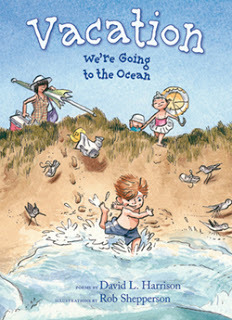 8. Realistic--this has a contemporary setting and humans act like humans and animals as well as spoons, trains, etc. are all doing what they should in the real world. These often highlight a concept that might be hard for a child to understand such as getting over a death or struggles with peers. Purplelicious is an example of realistic fiction where the main character (Pinkalicious) is being made fun of for her pinktastic tastes and it shows how she can resolve her problems. Notice this is still a fun, fictitious character, but it's still set in the real world. Julia Cook has great examples of this type of book. You should check them out!
8. Realistic--this has a contemporary setting and humans act like humans and animals as well as spoons, trains, etc. are all doing what they should in the real world. These often highlight a concept that might be hard for a child to understand such as getting over a death or struggles with peers. Purplelicious is an example of realistic fiction where the main character (Pinkalicious) is being made fun of for her pinktastic tastes and it shows how she can resolve her problems. Notice this is still a fun, fictitious character, but it's still set in the real world. Julia Cook has great examples of this type of book. You should check them out!9. Poetry--these are books that have many or just one poem within it. Boyds Mills Press has an imprint dedicated to poetry books called Wordsong. Take a look at their offerings for some great examples. A good example of a book that is basically a concept book but is told through one long poem is Atlantic by G. Brian Karas. Nursery rhymes and songs are examples of these types of books as well.
10. Nonfiction--whether it's highlighting some historical figure or a science concept, nonfiction is the most sought after type of book. Nonfiction is factual--it gives information about a subject. Teachers and librarians want nonfiction because of the change to common core standards. Soon, almost all states will adopt this standard and teachers will be using more literature to teach subjects like math and science. A sub-category of this genre is creative nonfiction--that's where a nonfiction subject is taught through a fictional story. A great example of the type of book editors are looking for is What to Expect When You're Expecting Larvae. By using a take on the What to Expect When You're Expecting books, this one highlights everything you'd ever want to know about larvae creatures. It's FULL of squirming facts. If you gravitate toward facts rather than fiction, the sky is the limit for you! I've heard editors are really searching for science because of Common Core.
Whew! That's a lot to think about. Now here's what I want you do do this week.
Assignment 1:
Go to your library and check out your limit of picture books. Anything you want! But I want you to try to choose books that have been published recently--within the last five years. Older books, while they have their strengths, are not always good examples for you to read because what editors want are modern books with modern slants. Take them home and read each one. Using a word processor program, notebook, anything you can scribble on, write out the name of the book, the year it was written, and list the genres you think it encompasses. If you want a gold star, take note of the publisher and see if the editor is mentioned in the front of the book. (I know my editor as well as art director are mentioned in my Princess Peepers books.)Think about the genres you are most attracted to. Go back to the library and check out your limit of the top three genres you're interested in writing. Take them home and read them. List qualities you think make these books special. Keep this journal for future reference.Go back to the library and check out three genres you didn't check out before. Read them and take note. Did you like that genre? Are there reasons you don't gravitate toward a certain genre over another?When you're finished, I hope you have read at least 20-25 different picture books this week. So, what are you waiting for? It's time to go to the library! Hey, you want a ride? I'm going with you.
And don't forget! If you like this post, please share it with others. Click the like button below or the tweet bird or post something about it on your blog!
Happy reading!
Published on July 01, 2013 09:04



